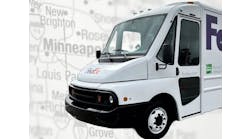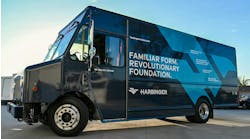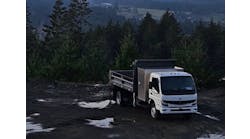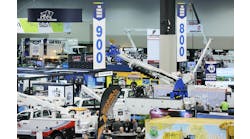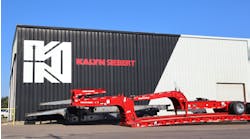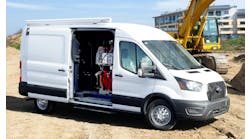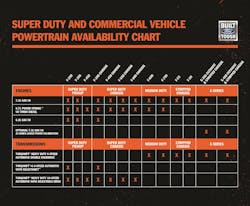Boasting best-in-class horsepower and torque ratings, Ford has finally dropped the performance numbers on its all-new 7.3-liter V8 gasoline engine. In a press preview, company representatives also detailed the all-new 10-speed heavy-duty TorqShift transmission on Super Duty pickups and announced that Power Takeoff (PTO) now comes standard with the 10-speed and the 6.7-liter Power Stroke turbo diesel engine for auxiliary power needs on commercial vehicles.
The 7.3-liter engine in a Super Duty pickup cranks out 430 horsepower at 5,500 rpm with of 475 ft.-lb. at 4,000 rpm, according to Ford, while no other manufacturer provides such a powerful and advanced gasoline engine in such a broad range of offerings – from Class 2 Super Duty pickups through Class 7 commercial trucks. Ford's aim is to provide work truck customers a more powerful engine option without the cost and complexity of a turbocharger.
“The 7.3-liter is designed for maximum durability in the harshest environments given that our customers live and work in these conditions every day,” said Joel Beltramo, Ford manager for gas V8 engines. “This engine has the largest displacement in its class and is designed to provide benefits in key areas like power, durability, ease of maintenance and total operating costs.”
The 7.3-liter V8 features an overhead valve architecture that generates power low in the rev range to help get heavier loads moving sooner. It also features a variable-displacement oil pump, extra-large main bearings, forged steel crankshaft for durability, and piston cooling jets to help manage temperatures under heavy load.
The engine will be available first in Super Duty F-250 and F-350 pickup models. It joins the 6.2-liter V8 gas engine in Super Duty’s lineup, along with the upgraded third-generation 6.7-liter Power Stroke diesel V8. Additional power and capability numbers, including Super Duty towing and payload ratings as well as power numbers for the upgraded 6.7-liter Power Stroke diesel will be announced later this year.
A dyno-certified version of the 7.3-liter V8 producing 350 horsepower at 3,900 rpm and 468 lb.-ft. of torque at 3,900 rpm will be standard on F-450 chassis cab, F-550, the new F-600, F-650 and F-750 Medium Duty trucks, and F-53 and F-59 stripped chassis models. The upgraded E-Series will also feature the 7.3-liter V8. An optional calibration intended to help customers reduce their fuel consumption will also be offered; more information will be made available at a later date, the company said.
The 7.3-liter engine is paired with the all-new Ford-designed and Ford-built 10-speed heavy-duty TorqShift automatic transmission on all models except F-650 and F-750, which retain the heavy-duty 6-speed.
PTO standard
New on the 2020 Super Duty Chassis Cab, the 6.7-liter Power Stroke and all-new TorqShift 10-speed heavy duty automatic transmission with the PTO provision delivers best-in-class stationary torque of up to 300 ft.-lb. for commercial vehicle bodies that require direct-to-component or hydraulic body motor power. That’s 50 ft.-lb. more than the closest competitor, Ford notes.
“For a lot of our commercial and heavy-duty retail customers PTO power is the only way they can get a job done,” said Kevin Koester, Ford commercial vehicle marketing manager. “With more PTO torque on hand every task is easier and even bigger projects are now within reach.”
Standard PTO is also expected to provide residual value benefits for Super Duty customers, Koester pointed out.
PTO provision will remain optional on 2020 Super Duty Pickup models and 7.3-liter gas V8 Chassis Cab models. Output with the TorqShift heavy-duty 6-speed automatic double-overdrive transmission for F-650 and F-750 trucks and Super Duty stripped chassis trucks will be announced at a later date.
If a job has to get done and stationary power won’t cut it, the 10-speed Heavy Duty Automatic features Ford’s pioneering Live-Drive Power Takeoff which allows customer to operate accessories when the engine is running whether the vehicle is in motion or stopped. This is critical for equipment requiring power on the move such as snowplows and dump trucks. A split-shaft mode gives users the ability to connect additional equipment directly to the main driveshaft.


